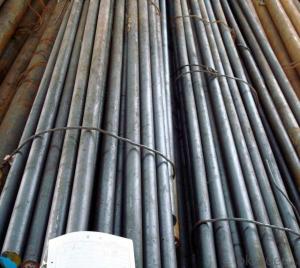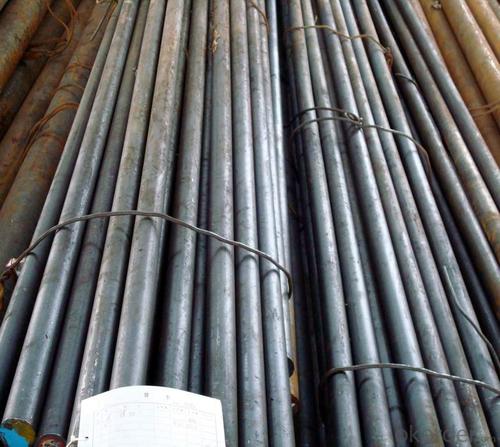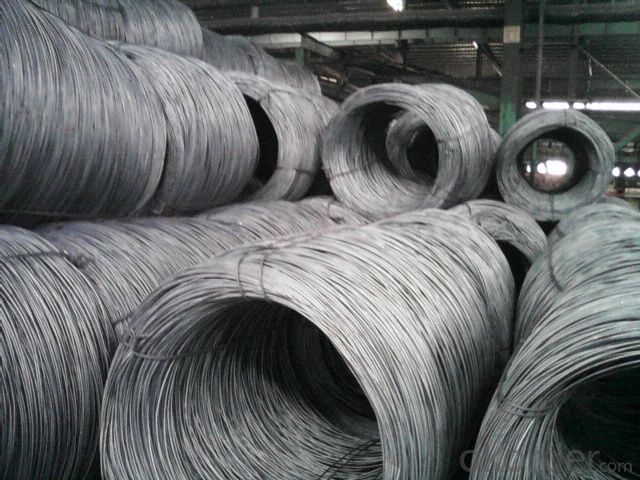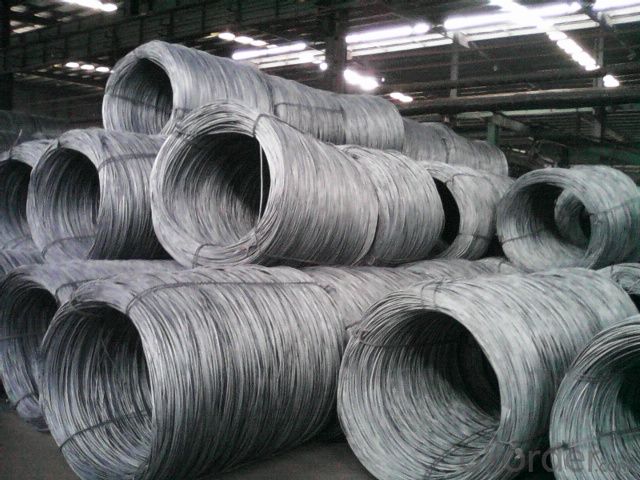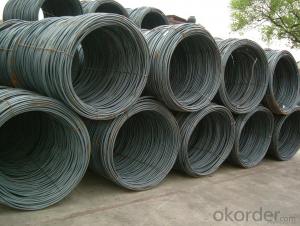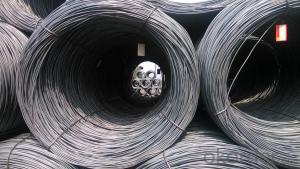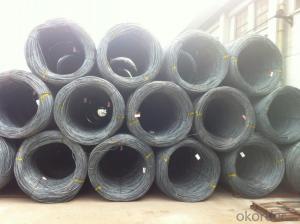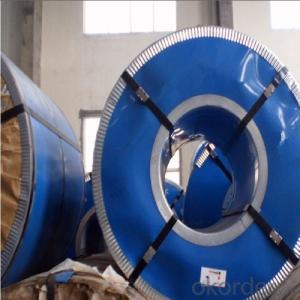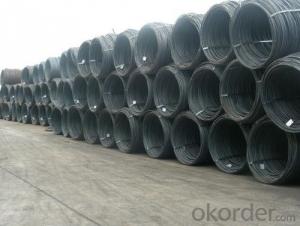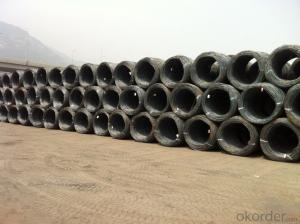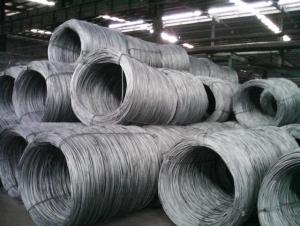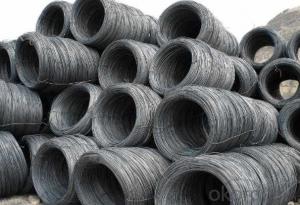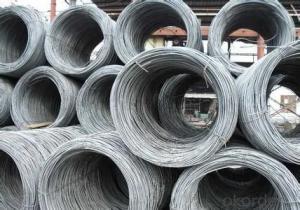Hot Rolled Steel Wire Rod Coil Many Sizes
- Loading Port:
- China Main Port
- Payment Terms:
- TT or LC
- Min Order Qty:
- -
- Supply Capability:
- -
OKorder Service Pledge
OKorder Financial Service
You Might Also Like
Product Description:
OKorder is offering Wire Rod at great prices with worldwide shipping. Our supplier is a world-class manufacturer of steel, with our products utilized the world over. OKorder annually supplies products to European, North American and Asian markets. We provide quotations within 24 hours of receiving an inquiry and guarantee competitive prices.
Product Applications:
After hot-rolled the products shaped into coil and delivery as finished product, including round, square, rectangular, hexagonal and so on. Since most of the products are round, it is generally called wire rod. Carbon steel wire rod is widely used in construction and manufacturing. Carbon steel wire rod is mainly used for reinforcement of reinforced concrete and welded structure or reprocessed (roberts , nail, etc.) materials, especially used to produce wire drawing, welding electrode, nails, spring, electronic, precise machinery parts and so on.
Product Advantages:
OKorder's Wire Rod are durable, strong, and resist corrosion.
Main Product Features:
· Premium quality
· Prompt delivery & seaworthy packing (30 days after receiving deposit)
· Corrosion resistance
· Can be recycled and reused
· Mill test certification
· Professional Service
· Competitive pricing
Product Specifications:
Steel Grade: Q195/235, SAE1006-1018B Standard: ASTM, GB
Diameter: 5.5mm, 6.5mm, 7mm,8mm,9mm,10mm,12mm,14mm
Type: in coil, coil weight around 2MT Alloy or Not: Alloy
Technique: Hot Rolled Place of Origin: China Mainland
Surface: round, no twisted, light and smooth Brand Name: HSKY
Chemical Composition: (Please kindly find our chemistry of our material based on Q195、Q235A and Q235B as below for your information)
| Trademark | Rank | Chemical composition (quality score) % | |||||||||||||||||||||
| C | Si | Mn | S | P | |||||||||||||||||||
| ≤ | ≤ | ≤ | |||||||||||||||||||||
| Q195 | 0.06-0.12 | 0.30 | 0.25 | 0.050 | 0.045 | ||||||||||||||||||
| Q235 | A | 0.14-0.22 | 0.30 | 0.30-0.65 | 0.050 | 0.045 | |||||||||||||||||
| Q235 | B | 0.12-0.20 | 0.30 | 0.30-0.70 | 0.045 | 0.045 | |||||||||||||||||
Images:
Q1: How soon can we receive the product after purchase?
A1: Within three days of placing an order, we will begin production. The specific shipping date is dependent upon international and government factors, but is typically 7 to 10 workdays.
Q2: What makes stainless steel stainless?
A2: Stainless steel must contain at least 10.5 % chromium. It is this element that reacts with the oxygen in the air to form a complex chrome-oxide surface layer that is invisible but strong enough to prevent further oxygen from "staining" (rusting) the surface. Higher levels of chromium and the addition of other alloying elements such as nickel and molybdenum enhance this surface layer and improve the corrosion resistance of the stainless material.
Q3: Can stainless steel rust?
A3: Stainless does not "rust" as you think of regular steel rusting with a red oxide on the surface that flakes off. If you see red rust it is probably due to some iron particles that have contaminated the surface of the stainless steel and it is these iron particles that are rusting. Look at the source of the rusting and see if you can remove it from the surface.
Images:
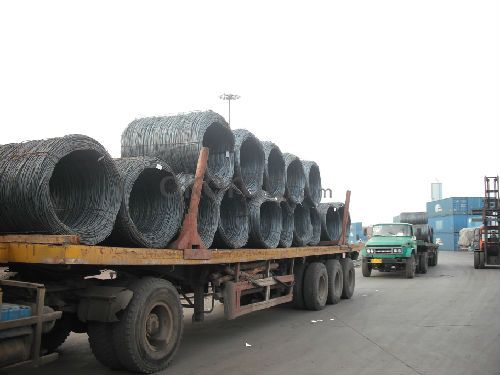
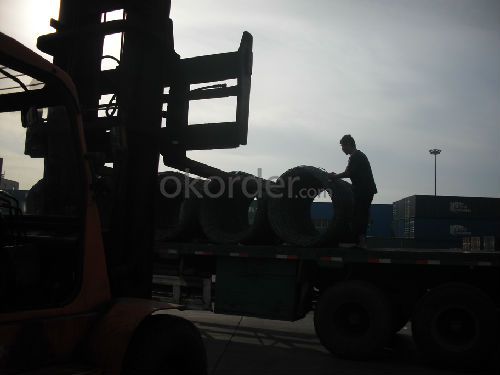
- Q: How is steel wire rod used in the manufacturing of wire forms for ski lifts?
- Steel wire rod is used in the manufacturing of wire forms for ski lifts as it provides the necessary strength and durability required for supporting the weight of the ski lift cabins and passengers. The wire rod is typically shaped and formed into various components such as cables, ropes, and pulleys which are then assembled to create a secure and reliable system for transporting skiers up the slopes.
- Q: What are the trade regulations for steel wire rod?
- The trade regulations for steel wire rod vary by country, but generally, they involve compliance with international trade agreements, import/export licensing requirements, customs duties, and anti-dumping or countervailing duty measures. Additionally, certain countries may have specific quality standards and certification requirements for steel wire rod imports. It is crucial for businesses engaged in the trade of steel wire rod to research and adhere to the specific regulations of each country they plan to trade with.
- Q: How are steel wire rods used in the production of wire ropes for ships?
- Steel wire rods are used as the primary material in the production of wire ropes for ships. These rods are first drawn into wire strands, which are then twisted together to form a strong and durable rope. The wire ropes are essential for various applications on ships, such as lifting heavy loads, mooring, and anchoring. Their strength and flexibility make them ideal for withstanding the harsh conditions at sea and ensuring the safe and efficient operation of ships.
- Q: How is steel wire rod used in the manufacturing of mattress springs?
- Steel wire rods are used in the manufacturing of mattress springs as they provide a strong and durable support system. These rods are formed into coils, which are then interconnected to create the spring structure that offers optimal comfort and support to the mattress.
- Q: How is steel wire rod recycled at the end of its lifecycle?
- Steel wire rod can undergo steel scrap recycling at the end of its lifecycle. This involves a number of steps to transform the wire rod into reusable steel materials. To begin the recycling process, steel wire rod scraps are collected from various sources such as manufacturing waste, construction materials, or end-of-life products like old cars or appliances. Once collected, the scraps are sorted and separated based on their composition and quality. The sorted steel wire rod scraps are then sent to a recycling facility where they are shredded into smaller pieces to facilitate further processing. Shredding can be done using different methods, such as hydraulic shears or industrial shredders. After shredding, the steel wire rod pieces undergo magnetic separation to remove any non-ferrous materials like plastic or rubber that may be mixed with the scraps. Magnetic separators attract and remove these non-ferrous materials, leaving behind the steel wire rod pieces. The separated steel wire rod pieces are further processed to remove impurities or contaminants. This is done through a process called melting, where the wire rod pieces are heated to extremely high temperatures in a furnace. This melting process burns off or skims off any impurities or contaminants from the molten metal. Once the impurities are removed, the molten steel is poured into molds to form new steel products. The molds can vary depending on the desired shape and size of the final product. After the steel has solidified, it can be further processed and treated to meet specific requirements, such as tempering or strengthening. The recycled steel wire rod can be used as raw material in industries like construction, automotive manufacturing, and appliance production. This reduces the need for extracting and refining virgin iron ore, which conserves natural resources and minimizes environmental impact. In conclusion, steel wire rod is recycled through a series of steps including collection, sorting, shredding, magnetic separation, melting, molding, and further processing. This process allows the steel to be reused in various industries, promoting sustainability and reducing the demand for new steel production.
- Q: How is steel wire rod used in the manufacturing of wire for power transmission lines?
- Steel wire rod is a crucial component in the manufacturing of wire for power transmission lines. It is used as the raw material for producing the high-strength conductors that are responsible for carrying electrical energy over long distances. The manufacturing process begins with the selection of high-quality steel wire rods, which are typically made from carbon steel or alloy steel. These wire rods are then subjected to a series of processes such as heating, rolling, and drawing to transform them into wires with the desired diameter and strength. The steel wire rod's primary function is to provide the necessary mechanical strength and conductivity required for power transmission lines. Steel is known for its exceptional tensile strength, which allows the wire to withstand the immense tension and stress experienced during installation and operation of transmission lines. Additionally, steel wire rod offers excellent electrical conductivity, meaning it allows the efficient flow of electricity through the wire. This is crucial for minimizing power loss and ensuring optimal transmission efficiency over long distances. The manufactured wire made from steel wire rod is typically stranded together to form a conductor. Multiple layers of these steel wire strands are then wrapped around a central core to create a composite conductor. This design enhances the strength and flexibility of the wire, making it suitable for withstanding extreme weather conditions, wind, and ice loads. Furthermore, steel wire rod plays a crucial role in ensuring the longevity and reliability of power transmission lines. Its corrosion resistance properties protect the wire from environmental factors, such as moisture and chemical exposure, which could otherwise compromise the integrity of the line. In summary, steel wire rod is integral to the manufacturing of wire for power transmission lines due to its exceptional tensile strength, electrical conductivity, and corrosion resistance properties. It enables the production of high-quality conductors that can efficiently transmit electrical energy over long distances while withstanding various environmental challenges and ensuring uninterrupted power supply.
- Q: What are the common industry certifications for steel wire rod?
- Some common industry certifications for steel wire rod include ISO 9001:2015 for quality management systems, ISO 14001:2015 for environmental management systems, and OHSAS 18001:2007 for occupational health and safety management systems. Additionally, certifications such as ASTM A510/A510M-18, ASTM A370-20, and ASTM A510/A510M-18a may be relevant for specific applications and standards compliance within the steel wire rod industry.
- Q: What are the different high-temperature properties of steel wire rod?
- Some of the different high-temperature properties of steel wire rod include high strength, good heat resistance, excellent oxidation resistance, and the ability to retain its shape and mechanical properties at elevated temperatures.
- Q: How is steel wire rod used in the manufacturing of electrical conductors?
- Steel wire rod is used in the manufacturing of electrical conductors as it provides strength, durability, and conductivity. The wire rod is drawn into the desired gauge and then coated with a layer of non-conductive material, such as enamel, to insulate it. This insulated wire is then used to make various electrical components like cables, transformers, and motors, ensuring efficient transmission of electricity while maintaining safety and reliability.
- Q: How is steel wire rod used in the manufacturing of wire harness assemblies?
- Wire harness assemblies rely on steel wire rod as an essential component in their manufacturing process. These assemblies, which serve to transmit electrical signals and power in industries like automotive, aerospace, and telecommunications, consist of intricate systems of wires, cables, and connectors. To manufacture these wire harness assemblies, steel wire rod is typically employed as the raw material. It undergoes processing and drawing to create thin, flexible wires of varying gauges and diameters. These wires are then coated or insulated with materials like PVC, nylon, or Teflon to provide protection against abrasion, heat, and moisture while also ensuring electrical insulation. The use of steel wire rod in wire harness assemblies offers numerous advantages. Firstly, steel is a strong and durable material that provides the necessary strength and structural integrity to the wires. This ensures that the wire harness assembly can withstand the challenges posed by its intended application and environment. Furthermore, steel wire rod boasts excellent electrical conductivity properties, enabling efficient transmission of electrical signals and power through the wires. This is particularly important in applications requiring high-quality signal transmission, such as automotive electrical systems or telecommunications infrastructure. Additionally, the flexibility of steel wire rod facilitates easy bending and shaping during the manufacturing process. This is crucial for creating complex wire harness assemblies that can fit into tight spaces or follow specific routes within a device or equipment. In summary, steel wire rod plays a crucial role in the manufacturing of wire harness assemblies by providing strength, electrical conductivity, and flexibility. Its utilization ensures the reliability and performance of wire harnesses in various industries, contributing to the smooth functioning of electrical systems.
Send your message to us
Hot Rolled Steel Wire Rod Coil Many Sizes
- Loading Port:
- China Main Port
- Payment Terms:
- TT or LC
- Min Order Qty:
- -
- Supply Capability:
- -
OKorder Service Pledge
OKorder Financial Service
Similar products
Hot products
Hot Searches
Related keywords
